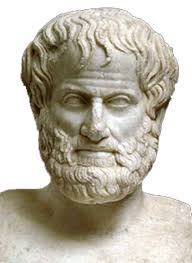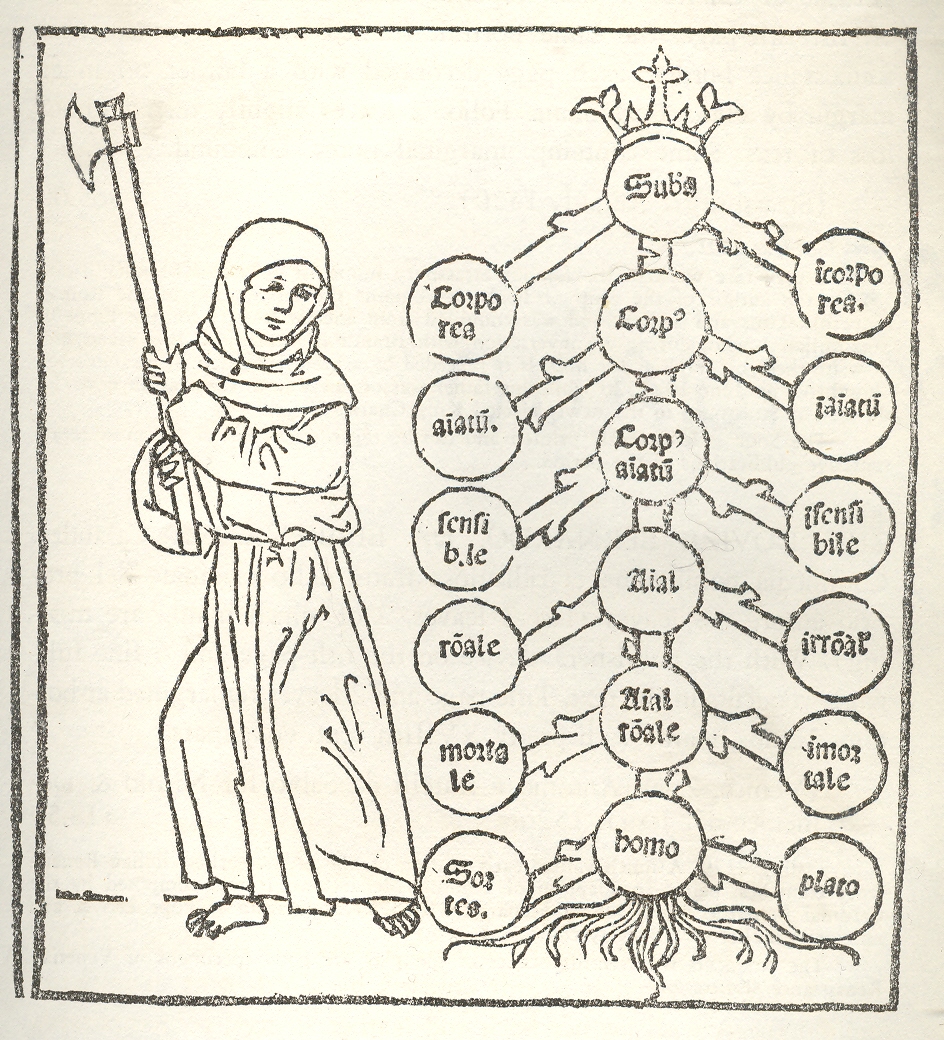Asembler - język imperatywny¶
mov ax, 5
mov bx, 6
add ax, bc
push ax
push msg
call _printf
Języki imperatywne¶
- Asembler
- FORTRAN
- ALGOL
- COBOL
- BASIC
- Pascal
- C
- ...
Haskell - język funkcyjny¶
In [ ]:
silnia :: Int -> Int
silnia 0 = 1
silnia x = x * silnia(x-1)
silnia 5 --> 120
znak :: Int -> Int
znak x
| x == 0 = 0
| x < 0 = -1
| otherwise = 1
znak 10 --> 1
znak (-10) --> -1
In [ ]:
pierwiastki :: Double -> Double -> Double -> [Double]
pierwiastki a b c
| delta < 0 = []
| delta == 0 = [- b / (2 * a)]
| delta > 0 = [(- b - sqrt(delta)) / (2 * a), (- b + sqrt(delta)) / (2 * a)]
where
delta = b ^ 2 - 4 * a * c
pierwiastki (-3) 1 2
[1.0,-0.6666666666666666]
In [ ]:
rownanie_kwadratowe :: Double -> Double -> Double -> Double -> Double
rownanie_kwadratowe a b c x = a * x ^ 2 + b * x + c
jakas_funkcja_kwadratowa :: Double -> Double
jakas_funkcja_kwadratowa x = rownanie_kwadratowe 1 (-1) 5 x
jakas_funkcja_kwadratowa 10 -- > 95.0
In [ ]:
razy_dwa :: Int -> Int
razy_dwa x = 2 * x
map razy_dwa [1..10] -- > [2,4,6,8,10,12,14,16,18,20]
map (\x -> x * 3) [1..10] -- > [3,6,9,12,15,18,21,24,27,30]
Przykłady języków funkcyjnych¶
- Lisp (Clojure, Scheme)
- Haskell
- Clean
- OCaml
- Erlang
- Scala
- Elixir
- ...
Kahoot nr 1¶
Cykl życia obiektu¶

In [ ]:
class Frog {
int numberOfLegs;
public Frog(){
numberOfLegs = 0;
}
}
Frog kermit = new Frog();
kermit.numberOfLegs;
Wymiana komunikatów¶

In [ ]:
class Frog {
int numberOfLegs;
public Frog(){
numberOfLegs = 0;
}
public void grow(){
numberOfLegs += 2;
}
}
Frog kermit = new Frog();
kermit.grow();
System.out.println(kermit.numberOfLegs);
kermit.grow();
System.out.println(kermit.numberOfLegs);
kermit.grow();
System.out.println(kermit.numberOfLegs);

Typowe cechy języków obiektowych¶
- abstrakcja (od typów sprzętowych)
- ukrywanie implementacji (przed innymi obiektami)
- przesyłanie komunikatów (pomiędzy obiektami)
- polimorfizm (zachowania)
- dziedziczenie (interfesju i/lub implementacji)
Abstrakcja¶
In [ ]:
struct complex {
double re;
double im;
}
struct complex cpx_add(struct complex arg1, struct complex arg2){
struct complex result = malloc(sizeof(complex));
result.re = arg1.re + arg2.re;
result.im = arg1.im + arg2.im;
resturn result;
}
Abstrakcja w językach obiektowych¶
In [ ]:
class Complex {
public double re;
public double im;
public Complex(double re, double im){
this.re = re;
this.im = im;
}
public Complex add(Complex other){
return new Complex(this.re + other.re, this.im + other.im);
}
public String toString(){
return "Re: " + this.re + ", Im: " + this.im;
}
}
null
In [ ]:
Complex a = new Complex(1,2);
Complex b = new Complex(-2,-1);
Complex c = a.add(b);
Hermetyzacja¶
In [ ]:
class Car {
private String vin;
private Color color;
private Person owner;
private int speed;
}
Rodzaje notacji - dygresja¶
PascalCase- notacja PascalowskacamelCase- notacja wielbłądziasnake_case- notacja z pokreśleniami (wężowa?)lisp-case- notacja lispowa (choć bardziej odpowiada nam szaszłykowa)
Hermetyzacja¶
In [ ]:
class Car {
private Color color;
public void paint(Color newColor){
this.color = newColor;
}
}
Hermetyzacja a powstawanie obiektu¶
In [ ]:
class Car {
private String vin;
private int speed;
public Car(String vin){
if(vin.length() != 17)
throw new RuntimeException("Invalid VIN!");
this.vin = vin;
this.speed = 0;
}
public String toString(){
return "VIN: " + this.vin + ", prędkość: " + this.speed;
}
}
Car brandNewCar = new Car("1FTWW33P34EB00251");
Wymiana komunikatów - odczyt oraz zmiana stanu¶
In [ ]:
class Car {
private String vin;
private int speed;
public Car(String vin){
this.vin = vin;
this.speed = 0;
}
public int getSpeed(){
return this.speed;
}
public void start(){
this.speed = 30;
}
public void stop(){
this.speed = 0;
}
}
Car car = new Car("1FTWW33P34EB00251");
In [37]:
Car car = new Car("1FTWW33P34EB00251");
System.out.println(car.getSpeed());
car.start();
System.out.println(car.getSpeed());
car.stop();
System.out.println(car.getSpeed());
0 30 0
Out[37]:
No Outputs
Polimorfizm - uzasadnienie¶
In [ ]:
struct list {
//...
}
struct set {
//...
}
void list_add(char* value);
void set set_add(char* value);
Polimorfizm - interfejsy¶
In [45]:
interface Container {
void add(Object element);
}
class OrderedList implements Container {
public void add(Object element){
//...
}
}
class FastSet implements Container {
public void add(Object element){
//...
}
}
null
Out[45]:
No Outputs
In [49]:
Container[] containers = new Container[2];
containers[0] = new FastSet();
containers[1] = new OrderedList();
for(Container container : containers) {
container.add("Hello World!");
}
null
Out[49]:
No Outputs
Arystoteles i dziedziczenie¶

Definicja w ujęciu Arystotelesa¶
Człowiek to zwierzę rozumne.
- zwierzę - genus proximum
- rozumne - differentia specifica
Porfiriusz i Awerroes¶
Porfiriusz (III-IV wiek n.e.) napisał komentarz do "Kategorii" Arystotelesa, w którym pojawia się słynne drzewo Porfiriusza, czyli klasyfikacja najbardziej ogólnych pojęć. Awerroes (XII w n.e.) był również komentatorem Arystotelesa. Ilustracja przedstawia wyimaginowaną rozmowę pomiędzy nimi.
Drzewo Porifirusza¶

Dziedziczenie - klasa Vehicle¶
In [ ]:
class Vehicle {
protected int speed;
public Vehicle(){
this.speed = 0;
}
public void start(){
this.speed = 10;
}
public void stop(){
this.speed = 0;
}
public int getSpeed(){
return speed;
}
}
null
Dziedziczenie - klasa Car¶
In [ ]:
class Car extends Vehicle {
private String vin;
public Car(String vin){
super();
this.vin = vin;
}
public void accelerate(int delta){
this.speed += delta;
}
}
null
In [ ]:
Car car = new Car("1FTWW33P34EB00251");
car.start();
car.accelerate(20);
car.getSpeed();
Dziedziczenie wielobazowe¶
In [ ]:
interface IVehicle {
void start();
void stop();
}
interface ICar {
void accelerate(int delta);
}
class Car implements IVehicle, ICar {
public void start() {
// ...
}
public void stop() {
// ...
}
public void accelerate(int delta) {
//...
}
}
Klasa Object¶
In [ ]:
class Object {
Object clone();
boolean equals(Object other);
void finalize();
Class getClass();
int hashCode();
String toString();
//...
}
Kahoot nr 2¶

